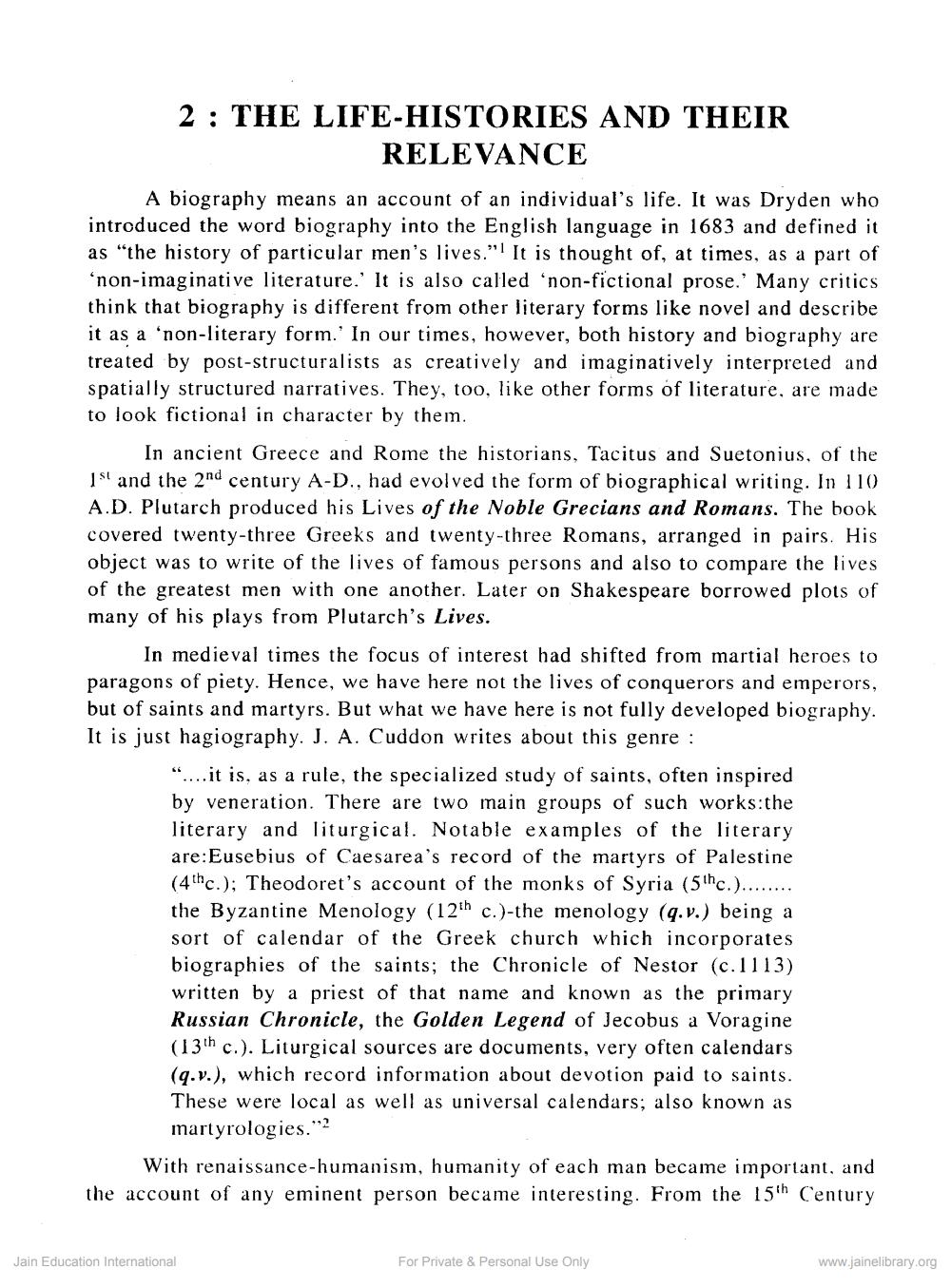________________
2 : THE LIFE-HISTORIES AND THEIR
RELEVANCE
A biography means an account of an individual's life. It was Dryden who introduced the word biography into the English language in 1683 and defined it as "the history of particular men's lives."! It is thought of, at times, as a part of ‘non-imaginative literature.' It is also called 'non-fictional prose.' Many critics think that biography is different from other literary forms like novel and describe it as a 'non-literary form.' In our times, however, both history and biography are treated by post-structuralists as creatively and imaginatively interpreted and spatially structured narratives. They, too, like other forms of literature, are made to look fictional in character by them.
In ancient Greece and Rome the historians, Tacitus and Suetonius, of the Is! and the 2nd century A-D., had evolved the form of biographical writing. In 110 A.D. Plutarch produced his Lives of the Noble Grecians and Romans. The book covered twenty-three Greeks and twenty-three Romans, arranged in pairs. His object was to write of the lives of famous persons and also to compare the lives of the greatest men with one another. Later on Shakespeare borrowed plots of many of his plays from Plutarch's Lives.
In medieval times the focus of interest had shifted from martial heroes to paragons of piety. Hence, we have here not the lives of conquerors and emperors, but of saints and martyrs. But what we have here is not fully developed biography. It is just hagiography. J. A. Cuddon writes about this genre :
"....it is, as a rule, the specialized study of saints, often inspired by veneration. There are two main groups of such works the literary and liturgical. Notable examples of the literary are:Eusebius of Caesarea's record of the martyrs of Palestine (4thc.); Theodoret's account of the monks of Syria (5thc.)........ the Byzantine Menology (12th c.)-the menology (q.v.) being a sort of calendar of the Greek church which incorporates biographies of the saints; the Chronicle of Nestor (c.1113) written by a priest of that name and known as the primary Russian Chronicle, the Golden Legend of Jecobus a Voragine (13th c.). Liturgical sources are documents, very often calendars (q.v.), which record information about devotion paid to saints. These were local as well as universal calendars, also known as
martyrologies."
With renaissance-humanism, humanity of each man became important, and the account of any eminent person became interesting. From the 15th Century
Jain Education International
For Private & Personal Use Only
www.jainelibrary.org




